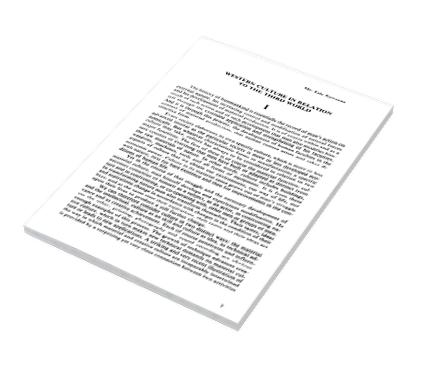Western Culture in Relation to the third world
DOI:
https://doi.org/10.37376/jofoa.vi13.2878Abstract
The history of humankind is essentially the record of man's action on external nature, his increasing control and modification of natural Tom and his development of material production. It is of course within and as a result of such action and of such development that man also moelopement that man also modifies himself through the extended application and strengthening of his faculties. And it is through this process, the development of human faculties me context of material production, that human culture arises and takes stinctive form.
Every society elaborates its own specific culture, which is more on advanced insofar as the particular society is more or less developed cu nominally. But whatever characteristic forms or manifestations a span culture may take, culture has always to be considered in relation to two major functions. The first of these is of course the material function: culture consists of everything that men have built or adapted as distinct Tom the raw materials of nature. In other words, culture includes buildings, weapons, machines, tools and all forms of equipment. It is from these aspects of culture that we obtain our environment, our way of life, our economic power. Culture in its material sense grows out of man's struggle with nature, first for bare existence and then for improvements in the conditions of human life.
Yet in the course of that struggle and the necessary development of material culture, man himself develops and experiences modification. He becomes conscious of himself as a subject, as an actor, in confronting nature and in confronting, or co-operating with, other men or groups of men.
transforming nature men also transform themselves. Their tastes, ideas and aspirations change in accordance with changes in the condition of their lives; and at the same time their aspirations, their tastes and their ideas act upon their lives to produce a still further change.
We can therefore consider culture in two distinct ways: the material and the intellectual, culture as an skill and culture as idea, as technical ad vance and as creative achievement. Each of course penetrates and influences the other: printing, photography and sound recording are obvious enough examples of this process. The growth of technique advances creative culture, which in turn makes new technical demands on material culture or leads to new applications. A striking and very recent illustration of the way in which material and creative culture are inseparably intertwined is provided by a surprising yet very close connection between two activities
Downloads





